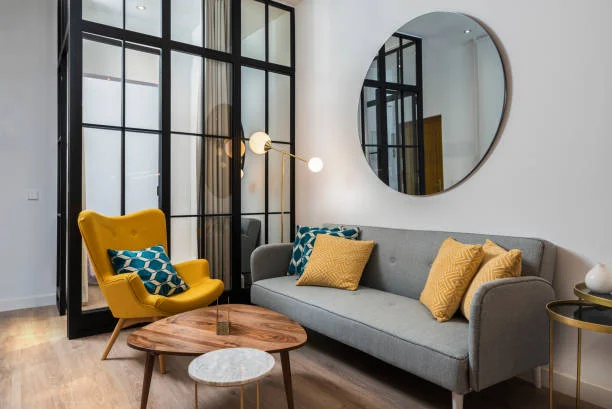How Velcro Works for Wall Décor
When it comes to decorating walls, not everyone wants to deal with nails, screws, or the inevitable patchwork that comes after. Whether you’re renting, redecorating frequently, or just want a cleaner look, Velcro offers an ingenious alternative. With adhesive-backed hook-and-loop fasteners, you can hang art, mirrors, and lightweight décor easily—and without damaging your walls. It’s one of those solutions that’s so simple you wonder why you didn’t try it sooner. Even beyond décor or Wall Décor, materials like stretchy velcro straps show just how adaptable this fastening technology can be, proving its strength and flexibility across countless uses.
The Science Behind the Stick
Velcro’s magic comes from its basic design: two sides that connect through tiny hooks and loops. When pressed together, these hooks grab onto the loops, creating a secure bond that can hold surprising weight. When pulled apart, the bond releases cleanly, leaving no residue or damage if used correctly.
In wall décor applications, Velcro’s adhesive backing sticks to smooth surfaces like painted drywall, tile, or metal. The other side attaches to the décor piece. Once the two sides meet, you get a reliable connection that holds firm yet can be removed or adjusted whenever you like.
This flexibility makes it ideal for spaces where drilling is discouraged—like apartments, dorm rooms, or offices. And because the adhesive forms a uniform grip across the entire surface, it avoids the uneven pressure that nails or hooks create.
Stay curious — this related post unfolds the next layer of meaningful insight.
Why Use Velcro for Wall Décor?
The biggest advantage of Velcro is freedom. You’re not committed to one spot forever. If you decide to rearrange your wall art or move your photos a few inches higher, you can do it in minutes—without a hammer or level. Velcro strips allow for easy repositioning while still providing dependable strength once secured.
They’re also great for renters who want to personalize their space without risking their security deposit. Adhesive Velcro solutions are designed to peel away cleanly from most wall types, leaving paint and plaster intact.
Plus, they work well for seasonal decorations. Swap out your framed prints for holiday art, hang a lightweight wreath, or display your kids’ school projects without leaving behind holes or tape marks.
Choosing the Right Type for the Job
Not all Velcro is the same, and choosing the right version can make all the difference. Lighter decorations, like photos or small canvases, work well with standard adhesive strips. For larger pieces—like framed artwork or mirrors—you’ll want heavy-duty or industrial-strength varieties.
There are also specialized types designed to handle heat, humidity, and textured surfaces. If you’re decorating a bathroom or kitchen, look for versions labeled as moisture-resistant. These maintain their grip even when exposed to steam or varying temperatures.
Before applying, make sure both surfaces are clean and dry. Dust and oil can weaken the adhesive bond. Once attached, press firmly for about 30 seconds to ensure full contact, then give it an hour or two before hanging your décor.
Safety and Weight Considerations
While Velcro can hold surprising weight, it’s still important to respect the limits of each product. Packaging typically lists the maximum load per set of strips. Exceeding that can cause sagging or gradual separation from the wall over time.
For heavier items, consider using multiple strips for distributed support. When in doubt, test a smaller item first to gauge how the adhesive performs on your wall surface. Also, be aware that textured walls like brick or heavily patterned wallpaper may not hold as securely as smooth painted surfaces.
The U.S. Consumer Product Safety Commission offers useful tips on safely mounting home items and ensuring wall adhesives or hangers are properly rated for their intended weight.
Creative Ways to Use Velcro in Wall Décor
Velcro’s adaptability goes beyond simply hanging frames. You can use it to mount lightweight shelves for small plants or trinkets, secure decorative wall panels, or even create interchangeable displays. Teachers and parents love using Velcro in classrooms or kids’ rooms—it’s easy to swap out posters and artwork without any fuss.
Another fun idea is to use Velcro for gallery walls. Arrange your pieces on the floor first, then use Velcro strips to experiment with different layouts directly on the wall. No hammering, no measuring twice—just press, step back, and adjust until it looks perfect.
Maintenance and Longevity
Velcro strips can last for years with proper care. However, environmental factors like humidity, heat, or direct sunlight may weaken adhesives over time. If a strip begins to lose its grip, replace it rather than trying to reinforce it with additional adhesives. Removing old Velcro is simple—just peel slowly from one corner while applying gentle heat from a hair dryer if necessary.
Always check for residue after removal. A mild cleaner or rubbing alcohol can help restore the wall to its original finish. With a little maintenance, your Velcro wall mounts can serve you through multiple décor refreshes.
The Future of Damage-Free Decorating
Velcro’s role in home décor is expanding as designers embrace functionality alongside aesthetics. With modern adhesives, eco-friendly materials, and sleek, low-profile fasteners, Velcro continues to redefine what “temporary” décor can look like. It’s no longer just for hanging posters—it’s a design tool that encourages creativity and flexibility.
From framed art to decorative panels and lightweight shelving, Velcro lets you reimagine your walls without committing to permanent changes. It’s affordable, accessible, and endlessly reusable—an innovation that continues to stick around for all the right reasons.
New perspectives await — explore more content that sparks your next idea.






